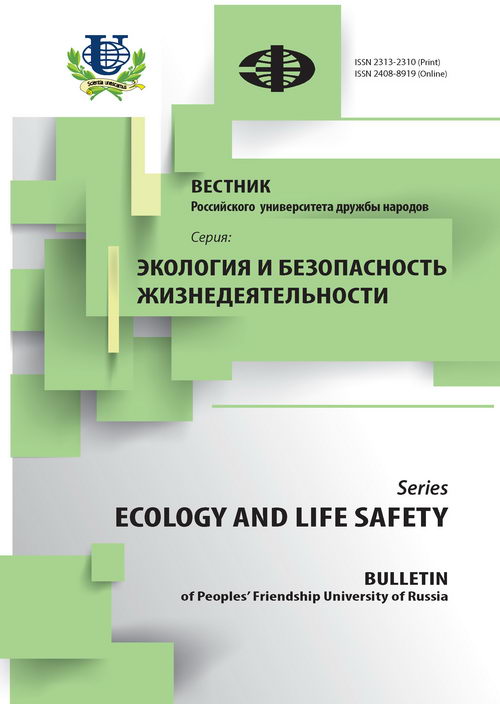Study of iodine distribution in meadow soil and plants formed in different geochemical landscapes related to evaluation of iodine status of the Bryansk oblast’
- Authors: Korobova EM1, Berezkin VU1, Kolmykova LI1, Korsakova NV1
-
Affiliations:
- Geochemical Institute (GEOKHI RAS)
- Issue: No 4 (2013)
- Pages: 60-67
- Section: Articles
- URL: https://journals.rudn.ru/ecology/article/view/12715
- ID: 12715
Cite item
Full Text
Abstract
Iodine deficiency is one of important factors contributing to the risk of thyroid cancer in areas subjected to radioiodine contamination. The aim of the study was to reveal spatial patterns in iodine distribution in soils and vegetation of the grazing lands of the Bryansk oblast affected by the Chernobyl accident. Iodine distribution was proved to be dependent upon the landscape geochemical type related to the type of soil and soil-forming rock and geomorphological position defining water regime. Its mean concentration in topsoils and vegetation has correspondingly decreased in a row: subordinated opolje landscapes — autonomous opolje landscapes — subordinated polesje and moraine landscapes — autonomous polesje and moraine landscapes. The spatial difference revealed in iodine accumulation was suggested to cause difference in iodine transfer to the local food chain and human organism and therefore to contribute to spatial variation in manifestation of thyroid diseases related to iodine deficiency and radioiodine contamination within the studied area.
About the authors
E M Korobova
Geochemical Institute (GEOKHI RAS)
Email: helene_k@mail.ru
V U Berezkin
Geochemical Institute (GEOKHI RAS)
Email: geokhimik@hotmail.com
L I Kolmykova
Geochemical Institute (GEOKHI RAS)
Email: kmila9999@gmail.com
N V Korsakova
Geochemical Institute (GEOKHI RAS)
Email: korsakovanv@gmail.com
References
Supplementary files















